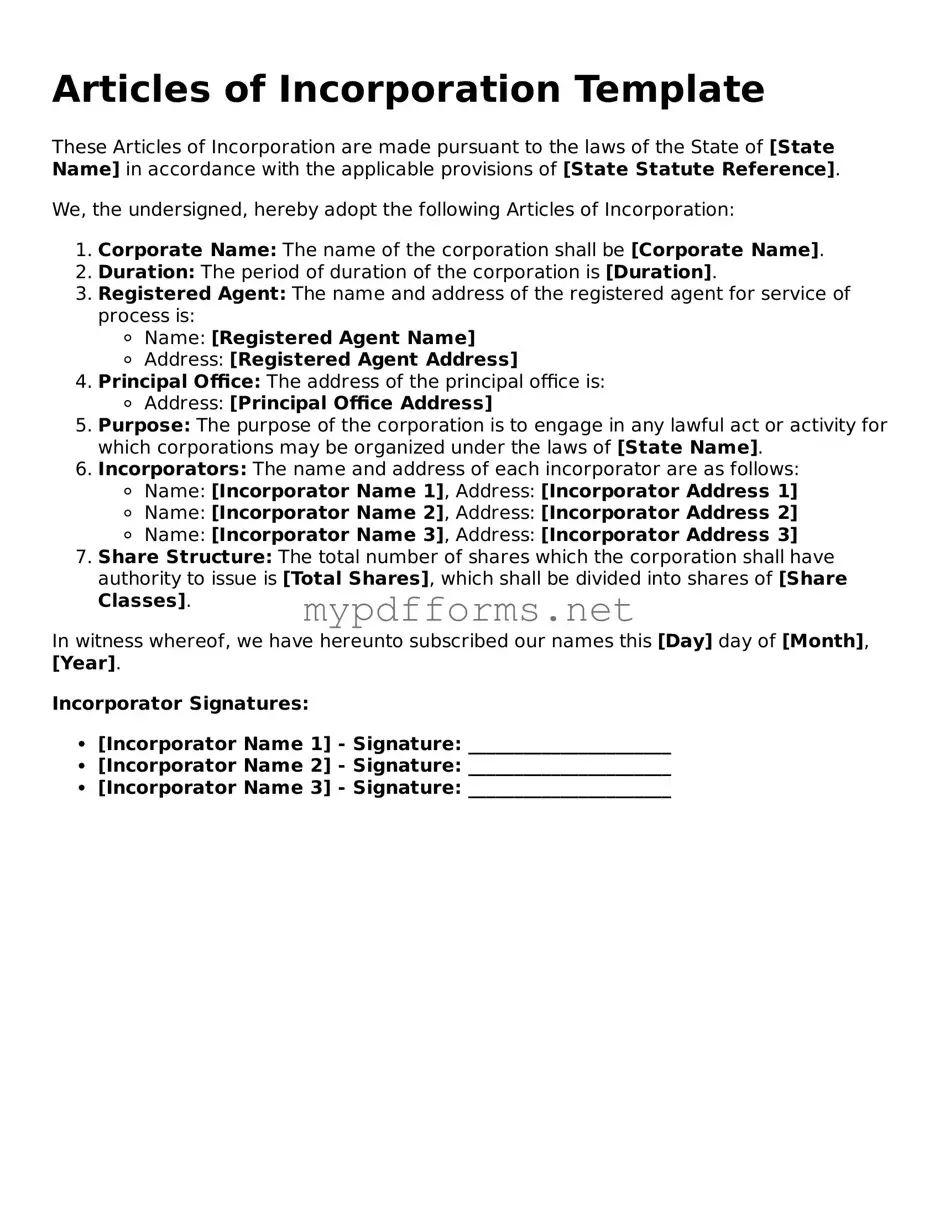The Articles of Incorporation is often compared to a business plan, as both documents serve to outline the foundational aspects of a business. A business plan details the goals, strategies, and financial projections of a company, while the Articles of Incorporation formally establish the entity's existence. Both documents are essential for guiding a business's direction, but the Articles of Incorporation is a legal requirement for incorporation, whereas a business plan is more of a strategic tool for internal use and potential investors.
Another document similar to the Articles of Incorporation is the Operating Agreement, particularly for limited liability companies (LLCs). This agreement outlines the management structure and operating procedures of the LLC. While the Articles of Incorporation provide basic information about the company, such as its name and purpose, the Operating Agreement delves into the specifics of how the business will be run, including the roles and responsibilities of its members. Both documents are vital for establishing clear guidelines for operation and governance.
The Bylaws of a corporation also share similarities with the Articles of Incorporation. Bylaws serve as the internal rules governing the management of a corporation, detailing how decisions are made, how meetings are conducted, and the rights and responsibilities of shareholders and directors. While the Articles of Incorporation are filed with the state to legally create the corporation, the Bylaws are typically kept internally and guide the day-to-day operations and decision-making processes of the corporation.
Shareholder Agreements can also be likened to the Articles of Incorporation. These agreements outline the rights and obligations of shareholders in a corporation. They often address issues such as the transfer of shares, decision-making processes, and dispute resolution. While the Articles of Incorporation establish the corporation itself, the Shareholder Agreement focuses on the relationships and agreements between the shareholders, ensuring that everyone understands their roles and responsibilities within the corporate structure.
For businesses looking to protect their sensitive information, completing a Maryland Non-disclosure Agreement form is crucial. This document ensures confidentiality between parties and is a vital component of business operations. To learn more about how to implement this protective measure, consider reviewing our guide on the essential Non-disclosure Agreement process here.
Lastly, the Certificate of Good Standing is another document that bears resemblance to the Articles of Incorporation. This certificate is issued by the state and confirms that a corporation is legally registered and compliant with state regulations. While the Articles of Incorporation are the initial document that creates the corporation, the Certificate of Good Standing serves as proof that the corporation is in good standing with the state, having fulfilled its legal obligations. Both documents are crucial for maintaining a corporation’s legitimacy and operational status.
